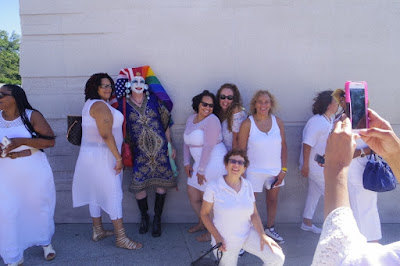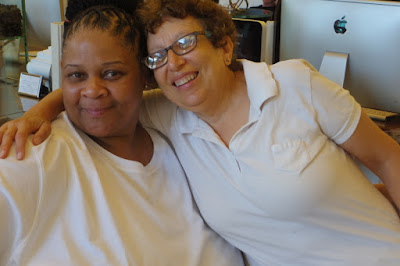Ten years ago, I was set free, turned loose from the federal prison camp in Danbury, Connecticut. It was time to seek out new adventures and new experiences. It was also time for me to reflect on the prison experience and on the protest that led me to prison.
I crossed the Fort Benning fence to say no to torture and assassination and to say yes to human rights and to life. I crossed the Fort Benning fence to express my dismay that a military training school (Western Hemisphere Institute for Security Cooperation, formerly known as the School of the Americas) was focused on public relations, rather than on accountability. The allegations that this school trained Latin American troops in torture and assassination were met with stonewalling and reluctantly produced and heavily redacted documents. I went to protest at the gates of Fort Benning because I sincerely believed that, if ordinary people made sacrifices, change could happen.
I was very optimistic. Maybe too optimistic. Change did not happen. I am not that optimistic any more.
But… back to ten years ago. I came away from prison, carrying the stories of the women with whom I lived, worked, and with whom I shared laughter and tears. These women, who had been ripped away from their homes and their families, had given me far more than I could ever give them. I had gone to prison to bear witness to injustice and I found women who had borne the injustice with grace, courage, and love in their hearts.
Here are some things that I took home with me:
Watching women trying to parent their children via daily (and expensive) fifteen minute phone calls helped to make me understand that the War on Drugs was a War on American Families. I met women in prison who were never caught with any drugs at all. They were charged with conspiracy because they were in a relationship with the wrong guy and they didn’t turn their boyfriend or husband in. Being clueless about your significant other’s involvement in illegal drugs is not considered a valid excuse. I also learned that being forced to participate in the drug business by an abusive spouse is also not considered a valid excuse.
 The segregation unit in the prison (the oddly named “Special Housing Unit”) seemed to be some rather abusive form of aversion therapy. Put people who may have broken some rule, either petty or major, into a little cage and keep them there until they squeal or cry uncle. Take them to the shower in handcuffs. Oh, and added bonus if you make the handcuffs just a little bit too tight. Some people were kept in the SHU for months. It is considered to be psychological torture.
The segregation unit in the prison (the oddly named “Special Housing Unit”) seemed to be some rather abusive form of aversion therapy. Put people who may have broken some rule, either petty or major, into a little cage and keep them there until they squeal or cry uncle. Take them to the shower in handcuffs. Oh, and added bonus if you make the handcuffs just a little bit too tight. Some people were kept in the SHU for months. It is considered to be psychological torture.
Health care is the nightmare of the prison experience. It was atrocious. Ill inmates were assumed to be malingerers, avoiding working at their prison jobs. The process for arranging for emergency medical services seemed to be slow, to the point of being life threatening. I remember one woman who suffered with a heart condition. She was a sweet lady who smiled readily and shyly. She was very ticklish and giggled just at the sight of fingers coming toward her. She went to the hospital for a treatment. The doctors wanted to keep her overnight at the hospital, but she was brought back to the prison, apparently against medical advice. A few days later, she collapsed. She was taken back to the hospital but, as far as I know, she never regained consciousness, and she passed away.
The women I met in prison were bright and resourceful. They made cheesecakes out of a variety of odd materials, such as canned pudding, powdered nonfat creamer, and other stuff. They used pencils and sticks as knitting needles. They made do with what they had in the environment.
The women in prison were creative and they shared their gifts. Some of them taught classes, such as painting, yoga, Polish, Spanish, and dance. Some of them taught more informally. Prison is where I learned how to prune shrubbery and to transplant seedlings and larger plants.
I never met a single woman in prison who could be considered a menace to society, were she to be released. I wondered why they were in prison. I wondered why I was in prison. One day, I was talking to my boss in the grounds maintenance shop and I said that I didn’t understand why I had not been sentenced to community service. He said, “You can do your community service here.”
I felt sad about leaving some dear friends behind in prison. These ladies have since been released and are back home. I have been fortunate enough to have made some very long lasting friendships in prison. Many of these women have become activists and are campaigning against mass incarceration. Some of them will be guest bloggers right here, in this blog.







That's when we met I'm glad we've kept in contact with each other
Wow! That's quite a story, and gives insight into another side of prison life. A is for Awareness Alert. #Build a Better Blog
We have created an industry of incarceration. Part of it is related to the inherent racism (oh, sure, they deny it) of our legislators, part of it related to the ubiquitous drug trade (amazingly, where White folk are sentenced far less frequently than those with darker skins, for similar infractions- see above).
Thanks for sharing your first-hand information.
It's about who we become over time than what one mistake took us on a wrong path.
My hero!!
So true Alice. You did a great job transferring the perrenials from staff housing, to camp. You were a wonderful friend then, and a good friend now. Remember eating an apple after dinner, walking out of the cafeteria? Our punishment was picking up goose poop on the sidewalk. Lol